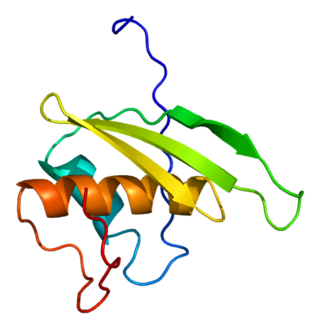| KLC2 | |||||||||||||||||||||||||||||||||||||||||||||||||||
|---|---|---|---|---|---|---|---|---|---|---|---|---|---|---|---|---|---|---|---|---|---|---|---|---|---|---|---|---|---|---|---|---|---|---|---|---|---|---|---|---|---|---|---|---|---|---|---|---|---|---|---|
 | |||||||||||||||||||||||||||||||||||||||||||||||||||
| |||||||||||||||||||||||||||||||||||||||||||||||||||
| Identifiers | |||||||||||||||||||||||||||||||||||||||||||||||||||
| Aliases | KLC2 , kinesin light chain 2 | ||||||||||||||||||||||||||||||||||||||||||||||||||
| External IDs | OMIM: 611729 MGI: 107953 HomoloGene: 22468 GeneCards: KLC2 | ||||||||||||||||||||||||||||||||||||||||||||||||||
| |||||||||||||||||||||||||||||||||||||||||||||||||||
| |||||||||||||||||||||||||||||||||||||||||||||||||||
| |||||||||||||||||||||||||||||||||||||||||||||||||||
| |||||||||||||||||||||||||||||||||||||||||||||||||||
| |||||||||||||||||||||||||||||||||||||||||||||||||||
| Wikidata | |||||||||||||||||||||||||||||||||||||||||||||||||||
| |||||||||||||||||||||||||||||||||||||||||||||||||||
Kinesin light chain 2 is a protein that in humans is encoded by the KLC2 gene. [5] [6]
| KLC2 | |||||||||||||||||||||||||||||||||||||||||||||||||||
|---|---|---|---|---|---|---|---|---|---|---|---|---|---|---|---|---|---|---|---|---|---|---|---|---|---|---|---|---|---|---|---|---|---|---|---|---|---|---|---|---|---|---|---|---|---|---|---|---|---|---|---|
 | |||||||||||||||||||||||||||||||||||||||||||||||||||
| |||||||||||||||||||||||||||||||||||||||||||||||||||
| Identifiers | |||||||||||||||||||||||||||||||||||||||||||||||||||
| Aliases | KLC2 , kinesin light chain 2 | ||||||||||||||||||||||||||||||||||||||||||||||||||
| External IDs | OMIM: 611729 MGI: 107953 HomoloGene: 22468 GeneCards: KLC2 | ||||||||||||||||||||||||||||||||||||||||||||||||||
| |||||||||||||||||||||||||||||||||||||||||||||||||||
| |||||||||||||||||||||||||||||||||||||||||||||||||||
| |||||||||||||||||||||||||||||||||||||||||||||||||||
| |||||||||||||||||||||||||||||||||||||||||||||||||||
| |||||||||||||||||||||||||||||||||||||||||||||||||||
| Wikidata | |||||||||||||||||||||||||||||||||||||||||||||||||||
| |||||||||||||||||||||||||||||||||||||||||||||||||||
Kinesin light chain 2 is a protein that in humans is encoded by the KLC2 gene. [5] [6]
KLC2 has been shown to interact with MAPK8IP3 [7] and KIF5B. [5] [8]

Kinesin family member 5B (KIF5B) is a protein that in humans is encoded by the KIF5B gene. It is part of the kinesin family of motor proteins.

Coatomer subunit epsilon is a protein that in humans is encoded by the COPE gene.

Nuclear migration protein nudC is a protein that in humans is encoded by the NUDC gene.

Kinesin light chain 1 is a protein that in humans is encoded by the KLC1 gene.

MARCKS-related protein is a protein that in humans is encoded by the MARCKSL1 gene.

Ras-related protein Rab-5B is a protein that in humans is encoded by the RAB5B gene.

Spermatid perinuclear RNA-binding protein is a protein that in humans is encoded by the STRBP gene.

Myotubularin-related protein 6 is a protein that in humans is encoded by the MTMR6 gene.

Afadin- and alpha-actinin-binding protein is a protein that in humans is encoded by the SSX2IP gene. It has been shown that it functions together with WDR8 in centrosome maturation, ensuring proper spindle length and orientation. The SSX2IP-WDR8 complex additionally promotes ciliary vesicle docking during ciliogenesis.

Kinesin family member 5A is a protein that in humans is encoded by the KIF5A gene. It is part of the kinesin family of motor proteins.

Adaptin ear-binding coat-associated protein 2 is a protein that in humans is encoded by the NECAP2 gene.

Ergosterol biosynthetic protein 28 is a protein that in humans is encoded by the ERG28 gene.

Uncharacterized protein KIAA1267 is a protein that in humans is encoded by the KIAA1267 gene.

CTTNBP2 N-terminal-like protein is a protein that in humans is encoded by the CTTNBP2NL gene. It is a substrate for phosphorylation.

TIMMDC1 is a protein that in humans is encoded by the TIMMDC1 gene. It is a chaperone protein involved in constructing the membrane arm of mitochondrial Complex I. A frameshift mutation in an intron of this gene has been shown to cause failure to thrive, retardation of psychomotor development, infantile-onset hypotonia, and severe neurologic dysfunction. High expression of this gene has been associated with migration of lung cancer cells while depletion of the protein has been shown to affect regulation of apoptosis, the cell cycle, and cell migration.

Mitochondrial Rho GTPase 1 (MIRO1) is an enzyme that in humans is encoded by the RHOT1 gene on chromosome 17. As a Miro protein isoform, the protein facilitates mitochondrial transport by attaching the mitochondria to the motor/adaptor complex. Through its key role in mitochondrial transport, RHOT1 is involved in mitochondrial homeostasis and apoptosis, as well as Parkinson's disease (PD) and cancer.

Activating signal cointegrator 1 complex subunit 3 is a protein that in humans is encoded by the ASCC3 gene.

Synaptotagmin-13 is a protein that in humans is encoded by the SYT13 gene.

DEP domain-containing mTOR-interacting protein (DEPTOR) also known as DEP domain-containing protein 6 (DEPDC6) is a protein that in humans is encoded by the DEPTOR gene.

Zinc finger protein 34 is a protein that in humans is encoded by the ZNF34 gene.